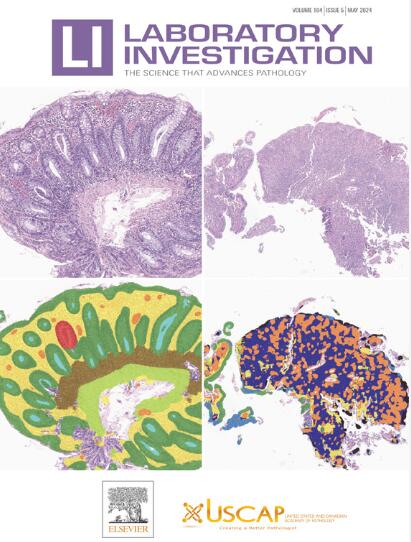超声内镜引导下细针穿刺刺激拉曼组织病理学胰腺活检的智能诊断。
IF 4.2
2区 医学
Q1 MEDICINE, RESEARCH & EXPERIMENTAL
引用次数: 0
摘要
内镜下超声引导下细针穿刺(EUS-FNA)已成为胰腺肿瘤最重要的术前诊断方法之一,但往往面临患者重复采样和复杂组织处理的挑战,阻碍了及时诊断。术中快速现场评价(ROSE)是一种辅助诊断技术,有助于实时评估样品质量,但它严重依赖于病理学家,涉及主观性和复杂的程序。在这里,我们开发了一种快速且无标记的方法,通过基于深度学习的受激拉曼散射(SRS)显微镜对EUS-FNA标本进行术中组织学检查,旨在取代ROSE并提供更有效和客观的诊断方法。新鲜胰腺EUS-FNA组织采用SRS成像,并与苏木精-伊红(H&E)染色进行比较,以确定关键的组织学特征。利用76例患者的图像,建立卷积神经网络(CNN)模型来识别良性、恶性和非诊断性区域,在33例外部测试集上,验证准确率达到bb0 96%。此外,梯度加权类激活映射(Grad-CAM)能够突出个体活检中的组织学特征。我们的方法有潜力应用于通过EUS-FNA对胰腺活检进行有效的术中评估。本文章由计算机程序翻译,如有差异,请以英文原文为准。
Intelligent Diagnosis of Pancreatic Biopsy From Endoscopic Ultrasound-Guided Fine-Needle Aspiration Via Stimulated Raman Histopathology
Endoscopic ultrasound–guided fine-needle aspiration (EUS-FNA) has become one of the most important preoperative diagnostic methods for pancreatic tumors, but it often faces challenges of redundant sampling from patients and complex tissue processing that hinders timely diagnosis. Intraoperative rapid on-site evaluation is an auxiliary diagnostic technique that helps assess sample quality in real time, but it heavily depends on pathologists and involves subjectivity and complex procedures. Here, we developed a rapid and label-free approach for intraoperative histology on EUS-FNA specimen via deep learning–based stimulated Raman scattering microscopy, aimed at replacing rapid on-site evaluation and providing a more efficient and objective diagnostic approach. Fresh pancreatic EUS-FNA tissues were imaged with stimulated Raman scattering and compared with hematoxylin and eosin staining to identify key histologic features. Using images from 76 patients, a convolutional neural network model was established to identify benign, malignant, and nondiagnostic areas, achieving a validation accuracy >96% on an external test set of 33 cases. Furthermore, gradient-weighted class activation mapping was able to highlight histologic profiles within individual biopsy. Our approach has potential application in efficient intraoperative assessment of pancreatic biopsy through EUS-FNA.
求助全文
通过发布文献求助,成功后即可免费获取论文全文。
去求助
来源期刊

Laboratory Investigation
医学-病理学
CiteScore
8.30
自引率
0.00%
发文量
125
审稿时长
2 months
期刊介绍:
Laboratory Investigation is an international journal owned by the United States and Canadian Academy of Pathology. Laboratory Investigation offers prompt publication of high-quality original research in all biomedical disciplines relating to the understanding of human disease and the application of new methods to the diagnosis of disease. Both human and experimental studies are welcome.
 求助内容:
求助内容: 应助结果提醒方式:
应助结果提醒方式:


